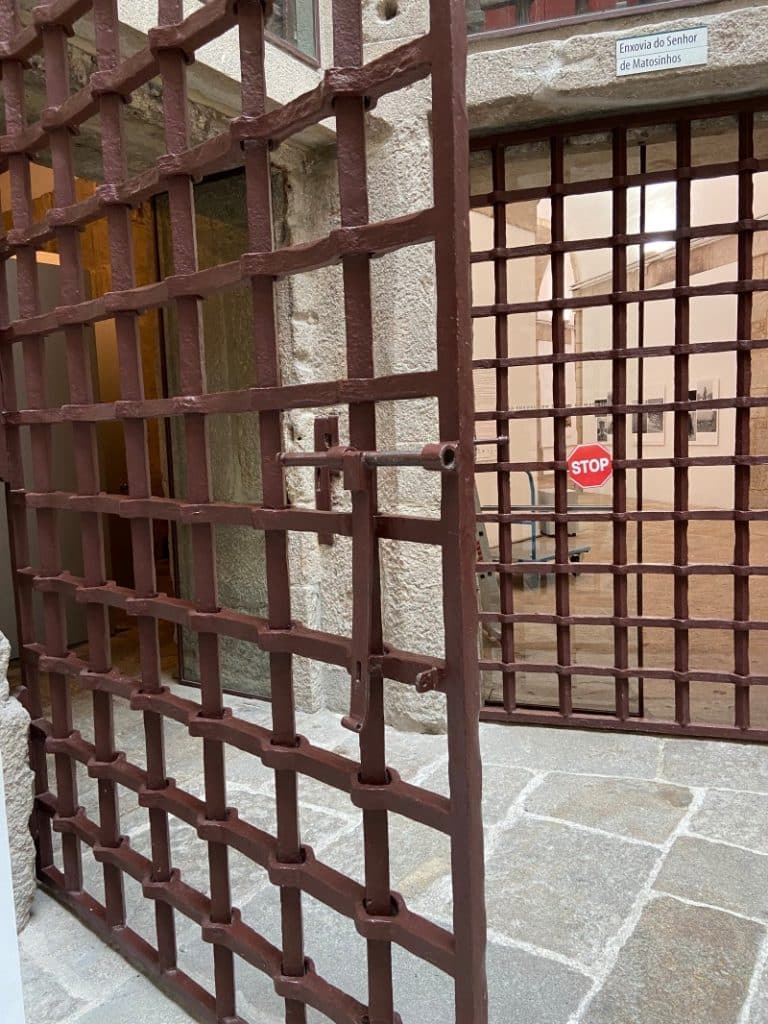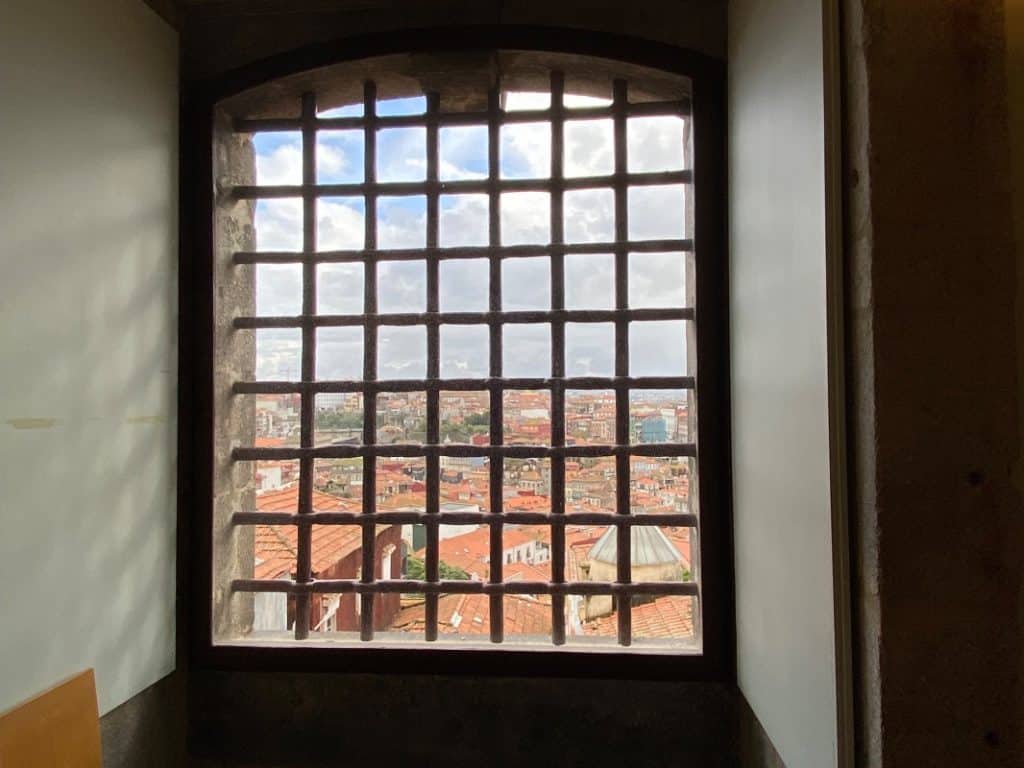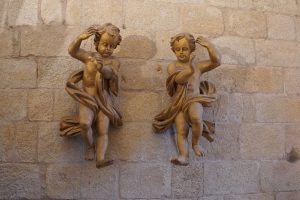In a large, already from the outside very impressive building in the center of Porto, is today the Portuguese Center for Photography. The visit is free of charge and was a little insider tip for us.

From prison to museum
Since 1582, a court of appeal operated in Porto. Over the years, the court was located in several locations in the city. In 1765, the administration decided that it was time to build its own building at Campo do Olival. It was not until 30 years after the work began that the large building was completed. It housed the court and a prison.

There was a chapel right next to the courtroom. A royal decree stipulated that a priest should say mass in the court house every morning. The prisoners were to be allowed to listen to this mass in their cells and in the corridors. If you go up the stairs from the first floor today, you will find yourself in front of the large doors behind which the court hearings were once held. Right next to it, on a door, the word chapel is still written.
In the prison area there were some well-known Portuguese. I read that in the Malta rooms, which were 14 cells, the martyrs of the fatherland were imprisoned. These were, for example, several generals and officers and the Duke of Terceira (lieutenant of Queen D. Maria II), who was arrested in 1846.
In another cell there was a famous banker, next to him a professor of the medical faculty, and then there were also political journalists and robbers among the prisoners. There was also a section for women accused of adultery, for example.

From 1961, the era of the Court of Appeal ended in the middle of Porto. A new, more modern building was erected and the old building was initially used by the city only as a prison. This then closed its doors in 1975 and stood empty for a short time. That same year, some families occupied the building and lived in it.

A little more than 10 years later, the Portuguese Institute of Architectural Heritage began to restore the building, but at that time there was no idea for a subsequent use. It was only when the Portuguese Center for Photography was created that it was decided that it should use the building in the future. In 1997 the first exhibition opened on the first floor and since 2001 the center has been using the entire building.

A view into the building
After passing the entrance, we reached a small courtyard from which a staircase leads to the upper floors. The view upwards impresses me, but also raises the question, why is there a red door , which leads directly into the courtyard – and that on the upper floor. I have not yet found an answer to this…

Here, in the courtyard, the prison character is quite clear. Large heavy lattice gates are located in front of the doors and windows. This place was well protected, certainly no one came out so easily.

We followed the stairs up to the second floor. Here is not only the former courtroom, but also some rooms that were used for administration. The rooms are high and bright, seeming almost stately to me.
On this floor, the Portuguese Center for Photography shows various temporary exhibitions. We stroll past beautiful photographs and could discover during our visit especially pictures of children from the Portuguese past.
In smaller rooms the visitor gets some information about the history of the house and about the prisoners who were confined here for many years.

A narrow staircase leads to the second floor. Here, the ceiling height is immediately much lower and most of the rooms are even smaller than on the lower floor. These small rooms used to house the cells for the prisoners. Today, there is a permanent exhibition worth seeing here with a wide variety of photographic equipment.



From very old apparatus to brightly colored plastic cameras for children, the exhibition is very diverse. Some cameras are very large, others are surprisingly small, there are cameras from the 19th century to the present. I am particularly impressed by the devices that were completely without modern technology and where the photographer still had to correctly measure the exposure and distance.

As we walk through the exhibition, we keep noticing small details that remind us of the past as a prison building. Bars in front of the windows offer a view of the city, just as the prisoners had it. The walls are much thicker and more massive than one is used to in other houses, the corridors are winding and narrow.

A great visit to the Portuguese Center for Photography! We really liked the exhibition and the building.
Address:
Campo dos Mártires da Pátria,
4050-091 Porto, Portugal
Opening hours:
Tuesday – Friday: 10-18h
Weekends and holidays: 15-19h
Closed: January 1, Easter Sunday, May 1 and December 25.
Entrance fees:
Free



















Leave a Reply